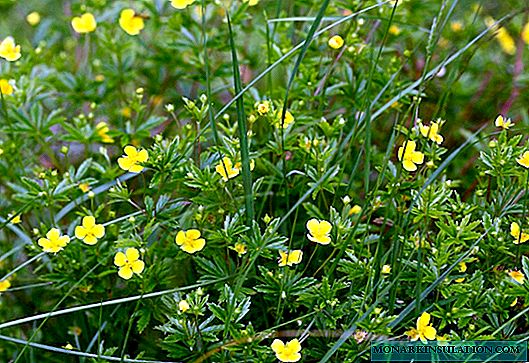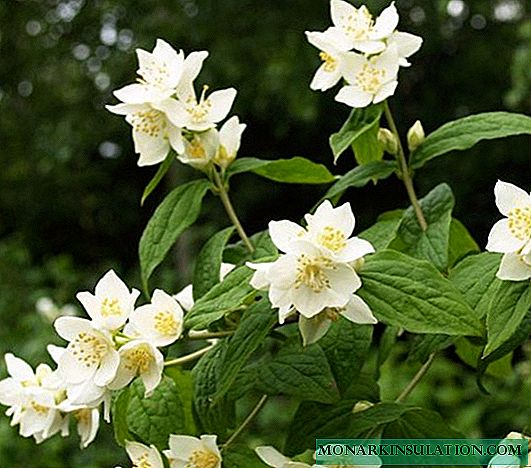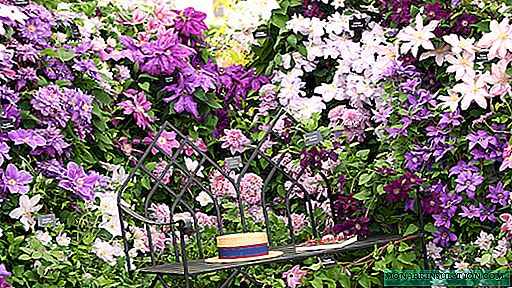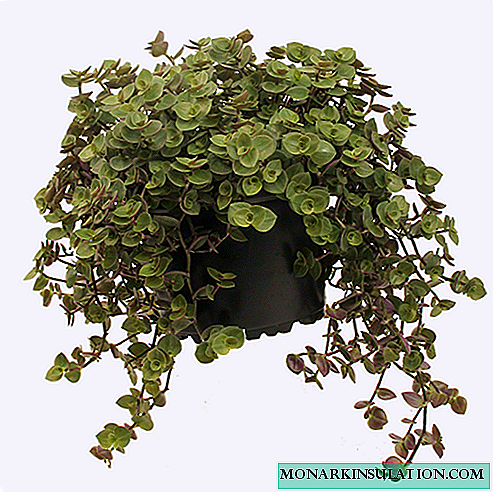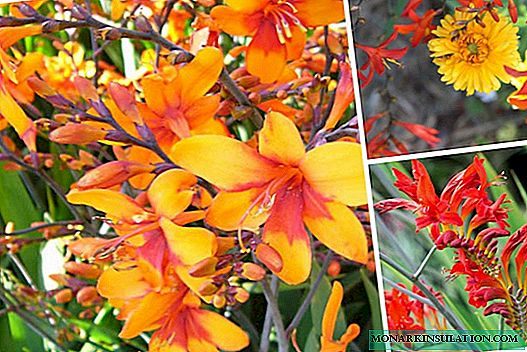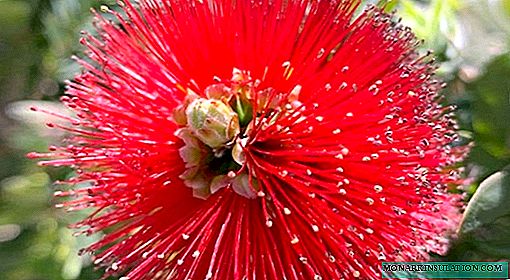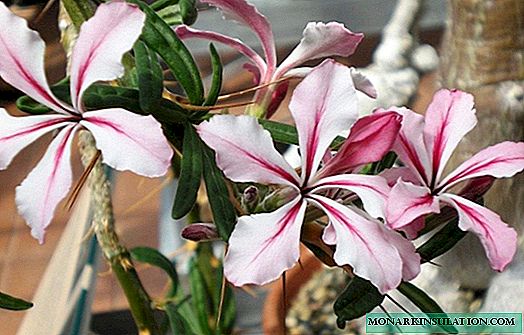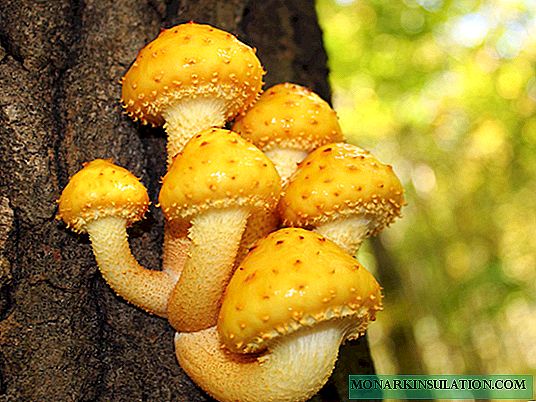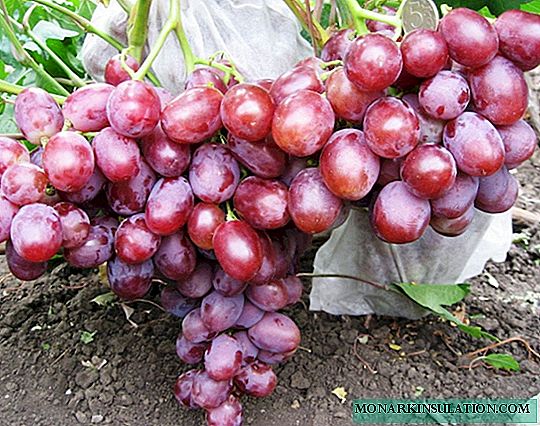
When choosing a grape variety, many gardeners dream of finding one that would possess all the positive characteristics at once. And often, in search of the perfect variety, novelties are ignored. But in vain. Many new hybrid forms can give odds to common varieties. Among such promising new products, Harlequin is a bright handsome man with sweet dark pink berries.
Harlequin grapes: how the variety appeared
The hybrid form of Harlequin grapes was obtained by crossing the varieties known and beloved by many winegrowers - Talisman and Haji Murat. The best qualities of parental varieties - disease resistance, frost resistance, good yield, high sugar content, large clusters - have become Harlequin's hallmark, along with a beautiful dark pink color of berries. The author of the variety is the famous Russian breeder Sergei Eduardovich Gusev.

The Harlequin hybrid form was obtained by crossing the varieties Talisman (left) and Haji Murat (right)
Sergey Eduardovich took up viticulture in the 90s. He bought and rented abandoned cottages in the Dubovsky district of the Volgograd region and collected over 20 years 3 hectares of land, which housed his collection of grapes, one of the largest in Russia, - more than 200 varieties of Russian and foreign selection. Gradually, the winegrower himself became interested in breeding work. Sergey Gusev admits that he dreams of producing a good variety, sustainable, with large and beautiful tasty berries. In this regard, there is already a result: several dozen hybrid forms have been selected by the wine grower, large enough and stable. At the beginning of 2018, 63 author's hybrid forms were described on the site of the breeder, among them Harlequin - pink table grapes with large clusters and berries.
Description and characteristics of Harlequin grapes
Harlequin - a variety of early-medium ripening period (from 125 to 130 days). Harlequin root-growing shrubs have high growth power. The shoots of the variety ripen well. The plant has bisexual flowers. It should be noted and the good rooting of cuttings of a hybrid form in the school.
The Harlequin clusters are large, their average weight reaches 600-800 g, rather dense, have a cylindrical shape with a pronounced wing. The yield of the hybrid form is high. Large dark pink berries reach a mass of 10-12 g, their size on average 30x27 mm. The berries are crisp, juicy, have a pleasant, harmonious taste, are characterized by a high sugar content (22%). According to the tasting assessment conducted in August 2014, Harlequin received 8.7 points. This is a very high rating, not all known and common varieties can boast such high levels of taste.

Large clusters with dark pink berries will become a real decoration of the garden
The variety is resistant to fungal diseases. Frost resistance - up to -24aboutFROM.
Harlequin - a relatively new hybrid form, grapes have not yet received wide distribution, but have already earned positive reviews.
Very successful selection! Catchy. The first year of 5 bushes with the crop. I’ll organize a school for the winter.
Nikolay Kimurzhi//ok.ru/group/55123087917082/topic/66176158766362
Features of growing varieties
In the climate of the Volgograd region, where Harlequin was bred, it grows well and does not require additional care measures. The main thing is to plant the plant correctly and in the right place, competently take care of the vine, normalize the bush and carry out preventive spraying to prevent fungal diseases.
When growing a Harlequin hybrid form, it is enough to follow the standard rules for planting and caring for table grapes. And knowledge of some features of the variety and care of the bush, taking into account these features, will be an additional plus and help to grow a high-quality and plentiful crop.
- Like any grapes with high bushes, Harlequin requires good support. The most common type of support is a vertical wire trellis. You need to install it in the second or third year after planting grapes. Trellis not only contributes to the formation of bushes. Thanks to it, shoots and clusters are distributed evenly, which provides good ventilation inside the bush and the influx of a sufficient amount of sunlight. And natural ventilation and sunlight are the key to the health of the bush and a good harvest.
- The average pruning of vines for fruiting is recommended for the variety - no more than 8 eyes should remain on the shoot. The average load on the bush is approximately 40-60 eyes. The quality and quantity of the crop directly depend on the correct load. Unloaded bushes give a small yield and “fatten” (very thick, fast-growing annual shoots appear loose on the bush, loose in structure, low productivity). On overloaded bushes, a slight growth of the vine is observed, the berries become smaller, and the yield may decrease in the next year.
- The variety is resistant to fungal diseases affecting grapes, but preventative treatments should not be neglected.
- The plant tolerates frosts to -24aboutC. It should be remembered that for plants weakened by diseases, for plants that were overloaded with crops, they did not properly fertilize (meaning excessive nitrogen or insufficient phosphorus and potassium), the temperature tolerance threshold decreases. In many regions, Harlequin will require shelter for the winter. In the northern regions, it is possible to grow varieties in a greenhouse.
During breeding, about 90% of varieties are usually rejected; only the best get the right to life. But whether they will be in demand by gardeners and winegrowers, or will remain only in the breeder’s collection, depends on many factors. The resistance of the variety to diseases, frost resistance, productivity, consumer qualities of berries - everything must be at its best, so that the new variety takes its rightful place among the many varieties already known and loved by winegrowers. The Harlequin hybrid form has every chance of success and, perhaps, every year its dark pink clusters will adorn more and more orchards and vineyards.

